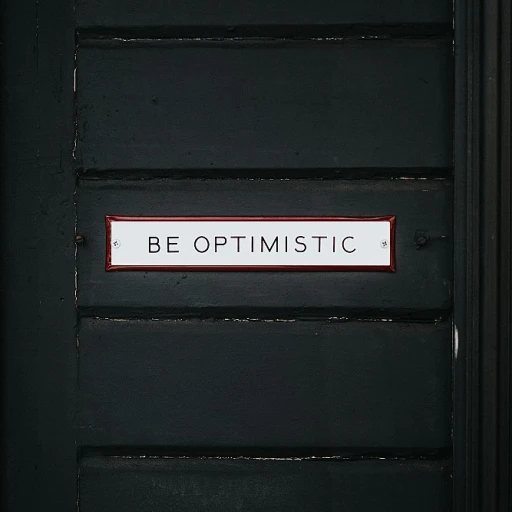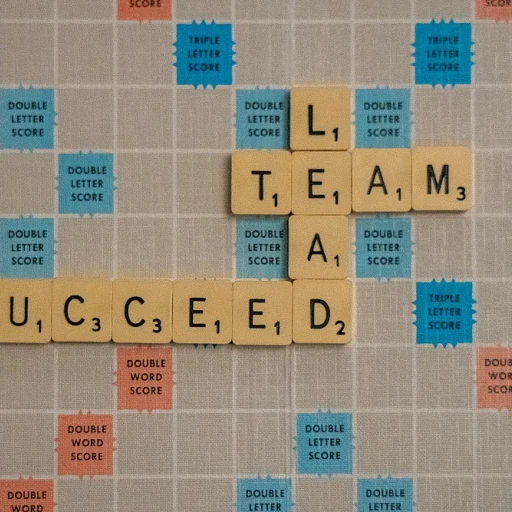Understanding Time Management: More Than Just Making Lists
The Essence of Effective Time Management
When we talk about time management, what often comes to mind are to-do lists and alarm clocks. Yet, true time management entails much more. It's about crafting the delicate balance between professional pursuits and the rich tapestry of life outside of work. This intricate dance of time allocation demands we prioritize not merely tasks but the undercurrents that drive them. To grasp the intersection of health and behavioral science in corporate strategy is to understand the human elements at play in time management. From avoiding burnout to cultivating resilience, aligning our day-to-day actions with our overall health and well-being is paramount.
Parsing Time Management Myths
The perpetual quest for increased productivity has given rise to many myths about time management. Some believe that multitasking is the hallmark of efficiency, but research discredits this notion. Studies show that toggling between tasks can reduce productivity by as much as 40%. It's not just about working harder but smarter. Effective time management skills are akin to a sculptor chipping away the unnecessary, revealing a form that is both functional and aesthetic—a true symphony of organized effort.
Gearing Up for Enhanced Focus
Managing time isn't solely about fitting as many tasks as possible into the day. It's about honing focus. One core element of time management is the ability to zero in on critical tasks while quieting the noise of less urgent matters. This doesn't just help with work productivity; it enhances our attention in all life areas, enabling deeper connections with loved ones and more profound experiences in our personal time. Amidst the cacophony of the digital age, the ability to focus is not just a skill; it's a sanctuary.
Time: A Resource That Demands Respect
We often speak of spending time as we do money, yet our temporal budgeting skills lag. Whereas we can earn and save money, time, once spent, is irretrievable. A 2018 survey by the American Psychological Association found that 87% of Americans view time management as a key to success, yet few employ rigorous strategies to govern their use of time. Recognizing time as a non-renewable resource is the first step to managing it with the reverence and strategic finesse it deserves.
Leveraging Time for Sustained Productivity and Harmony
Astonishingly, the benefits of good time management permeate beyond tangible productivity gains. Stress reduction, better work-life balance, increased opportunities for personal development, and higher job satisfaction are just some of the gifts of mastering this skill. As we continue to explore time management, from the wisdom of the Eisenhower Matrix to the focused bursts of the Pomodoro Technique, remember that time is the canvass of life, and managing it effectively paints the picture of a life well-lived.
Breaking Down the Eisenhower Matrix: A Tool for Smart Prioritization
Dissecting the Eisenhower Matrix for Effective Prioritization
Have you ever been swamped with tasks and felt unsure where to start? Enter the Eisenhower Matrix, a simple yet effective tool for prioritizing tasks and managing your day. Attributed to Dwight Eisenhower, the 34th President of the U.S., this method divides tasks into four quadrants based on urgency and importance. What's key here is differentiating what demands immediate attention from what can wait, ensuring critical activities align with long-term goals.
Here's the rundown: Activities classified as urgent and important are tackled first, as they are often the ones tied directly to our key responsibilities and deadlines. Those important but not urgent can be scheduled for later, as they typically move us towards our long-term aspirations. Tasks that are urgent but not important? They are prime candidates for delegation. And, when it comes to things neither urgent nor important, consider dropping them altogether. This act alone can drastically reduce stress and clutter from your list, steering you towards better work-life harmony.
Several studies back the effectiveness of this approach. For example, the American Psychological Association highlights the role of strategic prioritization in reducing anxiety around task completion. By leveraging the Eisenhower Matrix, individuals and teams can transform overwhelming lists into manageable action points.
Now, if you picture your workday dominated by strategic selections rather than a flurry of tasks, you're on the right track. This Quadrant method isn't just about the immediate—it's a way to weave your day-to-day efforts into the broader tapestry of your career and life goals.
From Theory to Action: Applying the Eisenhower Matrix
How do we adopt this matrix in our daily grind? Begin by jotting down tasks and assessing them against the urgency-importance grid. Then, shift your focus, channeling your energy into quadrant-specific strategies. From gatekeeping against unnecessary urgent tasks to planning for those key, non-urgent goals, the matrix acts as a compass for your efforts.
Let's face it, being busy doesn't always equate to being productive. The magic of the Eisenhower Matrix lies in identifying and prioritizing tasks that contribute to high-impact results, fostering productivity and granting a sense of accomplishment at the end of the day.
If you're looking to delve deeper into productivity and prioritization strategies, don't miss the insights on revolutionizing workplaces to make sure you're executing on the right tasks.
Navigating Priorities: Personal Experience with the Eisenhower Matrix
In my own experience, implementing the Eisenhower Matrix demanded an honest self-audit of my daily activities. Initially, the tasks that screamed for attention weren't always aligned with my long-term vision. By rigorously applying the matrix, I shifted course, dedicating the bulk of my energy to initiatives that delivered true value and satisfaction.
What I realized was that this isn't just a one-off exercise—it's an ongoing discipline. Each morning, revisiting the matrix provides clarity, ensuring that as new tasks emerge, they are filtered through the lens of importance and urgency. Over time, this becomes second nature, turning the matrix into a steadfast ally against time-wasters and distractions like social media.
By setting the stage for a disciplined approach to tasks, the Eisenhower Matrix can significantly boost your effectiveness. The result? You transform your relationship with time, equipping yourself to handle tasks and stress with greater ease and poise.
The Pomodoro Technique: Productivity in 25-Minute Bursts
Discovering the Pomodoro Technique: Timer-Guided Focus
Among the myriad of productivity boosters, the Pomodoro Technique, developed by Francesco Cirillo in the late 1980s, stands out for its simplicity and effectiveness. Named after a tomato-shaped kitchen timer, this method is celebrated for turning procrastination and distraction into focused work sessions. It segments work into 25-minute intervals, known as 'Pomodoros,' followed by a short break. This cadence is known to enforce discipline and enhance focus, thereby elevating time management and productivity.
Syncing with Your Internal Clock: Optimal Timing for Tasks
One aspect of the Pomodoro Technique's success lies in its alignment with the human attention span, which several studies suggest flags after about 20-30 minutes. With each Pomodoro, you're encouraged to dive deep into a task with the promise of an imminent break. This cyclical pattern helps you manage time, control distractions, and maintain a high level of productivity throughout the day.
While the traditional method specifies a set time, some prefer to adjust the length of Pomodoros and breaks to their personal rhythm. This tailored approach ensures they're working with their cognitive flow, not against it. As with any time management tool, the technique's utility blossoms when adapted to individual needs and preferences for more effective time management.
Practical Applications and Tangible Outcomes
In the realm of work, the Pomodoro Technique can swiftly transform overwhelming projects into manageable chunks. By partitioning work into discrete blocks, it helps professionals set achievable micro-goals, akin to turning a monolithic task list into a step-by-step strategy. For larger endeavors, these concentrated efforts can also serve as building blocks, seamlessly aligning with project management objectives.
Quantitatively speaking, research highlights that regular use of the Pomodoro Technique can lead to a substantial reduction in the time taken to complete tasks. Literature suggests that this approach not only aids in managing time efficiently but is instrumental in reducing work-related stress, thereby contributing to a more harmonious work-life balance.
Enhancing Time Management Across Vocations
It's not just office dwellers who can reap the benefits of this technique. Its applications are far-reaching - from academic circles where students harness focused study sessions, to creative professionals who use timed intervals to avoid burnout while sustaining innovation. Even within the home, managing daily chores through Pomodoro intervals can bring a sense of accomplishment and good time management skills.
Integrating the Pomodoro Technique into one's repertoire is a testament to the adage that effective time management is less about the quantity of hours worked and more about the quality of focus during those hours. This technique is a strategic ally for anyone looking to enhance their productivity, paving the way for not only better work output but a more fulfilling life.
Setting Realistic Goals: Aligning Daily Tasks with Long-Term Aspirations
Aligning Day-to-Day with the Big Picture
Have you ever felt like you're caught in a loop of busyness, but when you get to the end of the week, you have nothing substantial to show for it? The crux of the matter often lies in not having our daily tasks feed into our larger goals. That's where effective time management can bridge the gap between our daily grind and the milestones we aspire to achieve.
Decompose to Compose Success
How do we do this? First, understand that setting realistic goals demands a shift from being merely busy to being genuinely productive. Diligently break down your long-term aspirations into manageable chunks. This means translating those broad objectives into weekly, daily, or even hourly targets. For instance, if improving your project management skills is a key objective, allot time each day to learn a new aspect of the software you're using or to explore the latest techniques in the field.
Prioritize with Precision
Prioritization is indeed a time-worn technique, but its effectiveness remains unrivaled. Employ tools like the Eisenhower matrix to decipher what tasks are urgent and important, and align them with your long-term ambitions. According to a study published in the Journal of Applied Psychology, those who effectively prioritize report less stress and a better work-life balance, which reiterates the multifaceted benefits of being intentional with our daily agendas.
Track Your Progress
Setting goals without tracking progress is like embarking on a treasure hunt without a map. It's essential to pause periodically to assess how your daily tasks are contributing to your long-term goals. By doing this, you not only stay on track but also make necessary adjustments before straying too far from your desired trajectory. Time tracking software and regular self-reviews can be instrumental in this area.
Embrace Flexibility
It’s crucial to remember that life isn’t static, and your goals shouldn’t be either. Flexibility allows you to adapt and revise your goals as circumstances change. This doesn’t mean you’re straying from your path but rather fine-tuning it to fit the evolving nature of your work-life. The American Psychological Association suggests that adaptability is a key component of achieving a healthier time management approach.
Integrating Goals into Everyday Life
Ultimately, setting realistic goals is about integrating your larger vision into your everyday reality - making each day a stepping stone to your dreams. Whether it's switching off social media notifications to focus on a task or setting aside non-urgent emails until after you've completed your most important work, the devil, and the angel, is in the details. As Mark Twain once quipped, the secret of getting ahead is getting started. So let every day count, and make sure that each task you undertake is a note in the symphony of your overarching life's work.
Work-Life Balance: Juggling Professional Commitments and Personal Time
The Delicate Art of Juggling Professional and Personal Time
Oh, the perpetual dance between meeting deadlines and making dinner dates! Work-life balance, that elusive state of equilibrium where your job and your personal life coexist peacefully, is something most of us aim for. Real talk? It's not just about managing time; it's about managing energy and expectations too.
Picture the scene: You're a pro at organizing your day. Your task list is color-coded, and every hour is neatly compartmentalized into productive chunks (thanks to the trusty Eisenhower Matrix mentioned earlier). And yet, you end up feeling like you've run a marathon by five o'clock, with your personal to-dos glaring at you, unattended.
Let's face it, when the borders between work and life get fuzzy, it's you who ends up getting frayed at the edges. Brian Tracy, a maestro of time management, puts it bluntly, 'There is never enough time to do everything, but there is always enough time to do the most important thing.' Those important things? They're not always found in the office.
Fine-Tuning the Balance: Tweaking Your Day for Harmony
So, how do you go about fine-tuning this balance? It starts with a good, hard look at how you're spending each slice of your 24-hour pie. You've heard the saying, 'work smarter, not harder'—it's your new mantra. Prioritizing tasks that pack the biggest punch will free up time for life's pleasures and your long-term goals. Remember those?
Studies have shown that people who maintain a stable work-life balance tend to show less signs of stress and are in a better position to enjoy their personal lives without the shadow of work tasks looming over. According to the American Psychological Association, 60% of employees report that achieving work-life balance is crucial for their overall happiness and wellbeing.
Getting your work done within a set time means discipline, for sure. The Pomodoro technique you heard about? That's your productivity secret weapon. Small bursts of focused work can lead to massive gains in your personal life. Imagine what you could do with those reclaimed minutes from avoiding the dreaded burnout?
Plotting Personal Time with Precision
Circling back to the idea of alignment, it's essential to plot personal time with as much intention as you do work agendas. Set boundaries and stick to 'em. Whether it's turning off email notifications post 6 PM or carving out a no-meeting zone during midday to recharge, these small acts help you seize much-needed 'me time'.
Feeling guilty, are we? Drop it. Allocating time for yourself isn't selfish—it's smart. David Allen, in his revolutionary book 'Getting Things Done,' waves the banner of stress-free productivity. His philosophy? Get stuff out of your head and onto paper, or better yet, into an organized system. That way, you can truly enjoy your off time without the nagging feeling that you should be doing more.
So, next time you're knotting up about sending that last email or squeezing in one more call, ask yourself, is it really going to tip the scales? Or could it wait until tomorrow when your mind is sharp and your energy's topped off? Remember, it's all about the harmony—productivity and time management, they're essentially the yin and yang of your daily symphony.
Tech to the Rescue: Leveraging Time Tracking Software for Accountability
Embracing Digital Tools for Enhanced Time Oversight
It's no secret that we're living in a digital era where technology can make or break our work day. When it comes to managing our most valuable asset – time – tech tools are stepping up to the plate. Time tracking software is not just a fad; it's transforming the way professionals handle their hours, boosting both accountability and transparency.
Consider this: a survey by the American Psychological Association revealed that constant interruptions could lead to reduced productivity, avoidance of tasks, and burnout. This is where technology comes into play.
Choosing the Right Time Tracking Software
With dozens of time tracking software options out there, how do you find the 'Cinderella' fit for your shoe? It's not just about punching in and out; it's about finding a system that syncs seamlessly with your work style. Whether you're gravitating towards a simple stopwatch feature, detailed reporting, or integration with other project management tools, the key is customization.
According to Capterra, a leading software review platform, the best time tracking software includes features like real-time tracking, automatic billable hours calculation, and comprehensive reporting tools.
Streamlining Tasks and Boosting Productivity
Here's a compelling figure: a study by AffinityLive found that individuals who do not adequately track their time spent on emails and meetings estimate that they lose 3-5 hours a week. Time tracking software helps to shine a light on where exactly those lost hours are going. This transparency can help you reallocate your time effectively to the tasks that align with your strategic goals, as discussed in earlier sections.
But it's more than just clocking hours. These digital tools often come with analytical features that help you understand patterns in your workday. You could discover, for example, that those 'urgent' emails really aren't urgent after all, which dovetails neatly with the emphasis on prioritization laid out by the Eisenhower Matrix.
Encouraging Accountability and Self-Reflection
Time tracking software also fosters a culture of accountability. By identifying how much time a project task truly takes, team members can provide more accurate estimates and plan their workload more effectively. This leads to better work-life balance, as unrealistic expectations are minimized, and overworking becomes a traceable metric that can be tackled.
Self-reflection is another core benefit of time tracking. By reviewing time reports, individuals can assess their productivity cycles, adapt their working hours for peak performance, and set time-boundaries to ensure they're not overextending themselves. This self-analysis is pivotal for effective time management.
A Partner, Not a Watchdog
There's a common misconception that time tracking tools are invasive – the digital equivalent of a manager peering over your shoulder. However, when used correctly, these tools serve as a partner aiding you in managing time better. Time tracking software is designed to empower professionals to manage their time effectively, not to add stress by micromanaging every minute of their day.
Tech aids like time tracking software serve a valuable purpose: they provide a factual basis for evaluating how we spend our time. As we've already explored, good time management is about more than just ticking off tasks; it's about ensuring each tick aligns with the bigger picture of productivity and balance.
The Art of Saying No: The Impact of Refusal on Time and Stress Management
Empowering Yourself Through Strategic Refusals
Let's face it, saying yes can often seem like the path of least resistance. Whether it's a request for your time, a new project, or an invite to yet another meeting, the inclination to agree is a powerful force. But what if we told you that the art of saying no is a crucial component of managing your time and mitigating stress?
It's a simple truth: not every task or opportunity that comes your way deserves a slice of your time pie. Honing the skill to refuse and set boundaries can drastically enhance how you manage your day-to-day stress and prioritize your hours. So, how do successful professionals master this art?
Streamlining Your To-Do List by Decluttering Commitments
Remember the Eisenhower Matrix from Part 2? It's all about categorizing tasks by importance and urgency. Well, imagine slapping a 'no' on tasks that fall outside your pivotal activities. Saying no to non-essential tasks frees you up to focus on what's truly important and ultimately, makes space for better productivity and fulfillment.
The Psychology Behind No: Balancing Time and Stress
From an analytical viewpoint, the act of refusal is a stress-relief valve. A study from the American Psychological Association highlights that stress can be significantly reduced when individuals feel a sense of control over their responsibilities. Saying no is a form of exerting this control. It's a signal to yourself and others that you value your time and mental well-being enough to protect them.
In practicing time management, this means recognizing when to delegate, postpone, or simply decline requests. It's about ensuring your workflow is conducive to your productivity, not destructive to it.
The Ripple Effect of the Gentle No
Calibrating your response to requests with a gentle no can be transformative. Done right, it often leads to respect rather than conflict. Picture this: you're approached with a task that doesn't align with your objectives or current priorities. By articulating a clear and polite refusal, you're demonstrating a commitment to quality over quantity in your work. Such a response can encourage a culture of respect for time and effort, not just within yourself, but across your network.
Remember, good time management isn't about cramming as many activities into your day as possible. It's about the strategic selection and execution of activities that support your broader goals and objectives. Plus, by cutting down on stress, you're fostering an environment where creativity and productivity can thrive.
Refusing with Finesse: A Learned Skill
Much like any component of effective time management, saying no is a learnt skill. It can be uncomfortable at first, but by being mindful of your reasons and communicative in your approach, it gets easier over time. Experts like Brian Tracy and David Allen reassure us that exercising this power of refusal can lead to more profound personal and professional growth.
Transform your relationship with time and tasks by reflecting on their contribution to your goals. Does this work demand a chunk of your focus today, or can it be tapered for tomorrow? This consideration helps you navigate the ocean of demands with the compass of your objectives leading the way.
Wrapping Up: No as a Catalyst for Harmony
Understanding that saying no can be a strategic decision allows you to manage time and stress with thoughtful intent. By placing a greater emphasis on your essential tasks, as discussed in earlier sections of our series, you align your daily efforts with your long-term vision. You not only become more productive but also pave the way for a better work-life balance.
Saying no isn't just about self-preservation; it's an act of self-empowerment. It enables you to take control of your time and your life, and it's a testament to your commitment to personal excellence and professional integrity.
Continuous Improvement: Tips to Cultivate Time Management as a Lifelong Skill
Nurturing Time Management as a Lasting Competency
Good time management habits are not a set-it-and-forget-it deal; they’re a continually evolving skill set. Just like a muscle, your ability to efficiently manage time requires regular exercise and refinement. To transform time management from a mere tool to a lifelong skill, it's essential to embrace a mindset of continuous improvement.
Cementing Habits Through Reflection and Adjustment
Reflection is the bedrock of growth. After working through tasks with techniques like the Pomodoro or using the Eisenhower Matrix for prioritization, take moments to consider what went well and what could be better. Could some tasks have been delegated? Were the time estimates accurate? This self-audit helps fine-tune your time management strategies, leading to a more adept control of your day.
Learning from the Pros
There’s no shortage of expertise in the realm of time management. Tapping into the wisdom of thought leaders can provide new insights and methods to enhance your approach. Renowned voices like Brian Tracy and David Allen have penned influential works that detail the nuances of staying productive and organized. Tracy emphasizes the value of clarity in goal-setting, while Allen’s 'Getting Things Done' methodology reiterates the importance of a reliable system for managing tasks.
Embracing Time Tracking as a Learning Tool
Time tracking isn’t just about accountability; it's also a potent instrument for self-improvement. By regularly reviewing time logs, you can identify patterns in your work behavior and uncover potential areas of inefficiency. Stats indicate that tracking work can lift productivity significantly - sometimes by as much as 80%. This data-driven angle equips you with hard evidence to make informed adjustments to your routine.
Upgrade Your Skill Set with Advanced Approaches
Investing in professional development can yield big dividends in time management prowess. Whether it's adopting cutting-edge project management tools or refining your decision-making with advanced Eisenhower Matrix applications, enhancing your skill set is a solid strategy for managing time more effectively. The American Psychological Association reports that stress reduction and better task management are direct benefits of improved time management skills.
Turning Momentary Wins into Lifetime Practices
Your initial victories with new techniques must evolve into sustained practices. Making a habit of starting your day with strategic planning, or carving out regular slots for high-focus activities, can instill long-term discipline. Studies suggest that stress levels can decrease as one’s proficiency in time management increases, thus affirming the integral role these skills play in both professional and personal realms.
Interweaving Time Mastery into Life's Tapestry
Finally, recognize that time management intersects with every aspect of life. Integrating its principles into daily living, from managing social media consumption to prioritizing health and family time, contributes to a holistic application of these skills. Good time management practices can thereby not only propel your career forward but also enrich your life balance, turning the act of managing time into an art form that enhances your entire existence.














